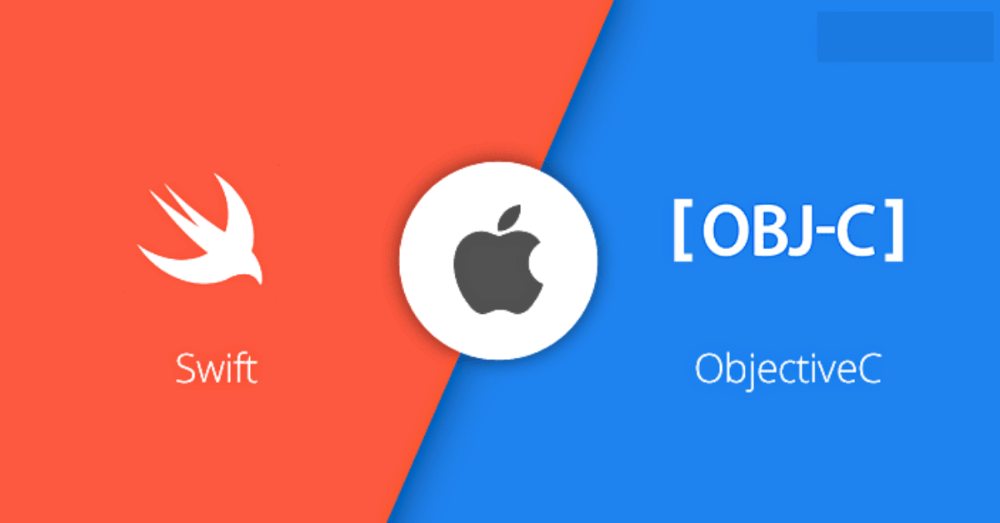When it comes to iOS app development, choosing the right programming language can significantly impact your project’s success. Two prominent options in this realm are Swift vs Objective C. This article will explore the differences between Swift and Objective-C, helping you make an informed decision for your iOS development journey.
What is Swift?
Swift is a modern and powerful programming language developed by Apple for iOS, macOS, watchOS, and tvOS app development. Introduced in 2014, Swift is a more efficient and user-friendly alternative to Objective-C. After all, designed to be a modern and efficient language, Swift offers a plethora of features and advantages that streamline the app development process.
Moreover, it combines the best elements of various programming languages while introducing innovative features and syntax, enabling developers to write cleaner, safer, and more expressive code. Overall, Swift aimed to address the limitations of its predecessor, Objective-C.
Features of Swift
- Swift incorporates modern programming concepts that enhance app safety and performance. Furthermore, It provides protection against commonly encountered programming errors, such as null pointer exceptions and out-of-bounds errors in arrays.
- It adopts a concise and expressive syntax, making the code readable and easier to understand. Moreover, it reduces the need for repetitive and unnecessary code, leading to cleaner and easily maintainable codebases.
- Swift uses Automatic Reference Counting (ARC) to manage memory automatically, alleviating the burden of manual memory management. Moreover, it efficiently tracks and manages memory, preventing common memory-related issues like leaks.

Advantages and Disadvantages of Swift
Advantages of Swift
- Speed and Performance: Swift is optimized for performance, often outpacing other languages in various benchmarks.
- Safety and Reliability: Its syntax emphasizes code safety, reducing errors and ensuring more stable applications.
- Modern Syntax: Swift offers a clear and concise syntax, enhancing code readability and maintainability.
- Open Source: Being open-source, Swift has a growing community that contributes to its development and optimization.
Disadvantage of Swift
- Compatibility Issues: Earlier versions of Swift were not backward compatible, requiring developers to frequently update their codebase with each new Swift release.
- Mature Libraries: Given that Objective-C has been around for much longer, there are more mature libraries available for it compared to Swift.
- Learning Curve: For developers well-versed in Objective-C, transitioning to Swift can present a steep learning curve.
- Integration with Third-party Tools: Some third-party tools might not be fully optimized for Swift, leading to potential integration challenges.
What is Objective-C?
Objective-C is a widely used programming language that has served as the primary language for macOS and iOS app development for many years. It originated in the 1980s and rose to popularity as developers increasingly adopted it throughout Apple’s software ecosystem. Although Swift has emerged as a powerful competitor, Objective-C continues to play a significant role in iOS app development.
Features of Objective-C
- Objective-C dynamic runtime environment enables dynamic method dispatch, allowing objects to be manipulated and modified at runtime, thereby offering flexibility and extensibility in coding.
- Objective-C relies on message passing as a means of communication between objects. Moreover, it uses square brackets to send messages to objects, providing a flexible and dynamic approach to method invocation.
- It benefits from a vast ecosystem of libraries and frameworks developed over the years. Furthermore, these libraries cover a wide range of functionalities, offering developers access to extensive resources and pre-existing code.

Advantages and Disadvantages of Objective-C
Advantages of Objective-C
- Mature and Stable: Objective-C has been around since the 1980s, making it a mature and stable language. Its longevity ensures that it has been extensively tested in real-world applications.
- Rich Libraries: Due to its long-standing use in macOS and iOS development, Objective-C boasts a vast collection of tried-and-true libraries and frameworks, providing solutions for a myriad of tasks.
- C Compatibility: Being a superset of the C programming language, Objective-C allows developers to run C code seamlessly within an Objective-C program, leveraging existing C libraries directly.
Disadvantage of Objective-C
- Verbose Syntax: Objective-C is often criticized for its verbose syntax, especially when compared to more modern languages like Swift. This can make the code harder to read and write.
- Lack of Modern Features: While Objective-C is robust and mature, it lacks some of the modern programming features and conveniences that newer languages offer, such as type inference and options.
- Memory Management: Before the introduction of Automatic Reference Counting (ARC), memory management in Objective-C was manual and error-prone, leading to potential memory leaks and increased development time.
- Declining Popularity: With the introduction and rise of Swift, Objective-C’s popularity has been on the decline. This means fewer resources, tutorials, and community support for new developers entering the ecosystem.
What are The Differences Between Swift and Objective-C?
When it comes to iOS app development, the choice between Swift and Objective-C is a crucial decision. Moreover, it can significantly impact your project’s development process and outcomes. In this section, we will compare these two programming languages, Swift and Objective-C, highlighting their differences and characteristics:
| Features | Objective-C | Swift |
|---|---|---|
| Syntax | More verbose and complex syntax | Concise and expressive syntax |
| Safety | Weakly typed language with manual error handling | Strongly typed language with built-in error handling |
| Memory | Manual memory management with retain-release pattern | Automatic Reference Counting (ARC) |
| Speed | Slightly slower performance compared to Swift | Faster performance due to optimized compiler |
| Interoperability | Full compatibility with existing Objective-C code | Interoperable with Objective-C |
| Community | Established ecosystem with extensive resources | A growing community with active support and resources |
| Learning Curve | Steeper learning curve and more complex code | Relatively easier to learn and read code |
When to Choose Swift vs. Objective-C
Careful consideration of multiple factors is necessary when deciding between Swift and Objective-C for iOS app development. Moreover, each language brings its own strengths and characteristics to the table. This section will discuss when it is most advantageous to choose Swift vs. Obj-C based on different scenarios and project requirements:
When to Choose Swift:
- Modern Development: If you are starting a new project or looking to embrace modern development practices, Swift is an excellent choice. Moreover, its clean syntax, safety features, and robust performance optimization make it ideal for building efficient and reliable applications.
- Rapid Prototyping: Swift’s concise and expressive nature enables faster prototyping and iteration cycles. Furthermore, its intuitive syntax allows developers to translate ideas into code swiftly, making it a preferred language for projects that prioritize speed and agility in development.
- Interoperability: Swift seamlessly integrates with existing Objective-C code, enabling incremental adoption and migration. Moreover, opting for Swift provides the opportunity to capitalize on the extensive iOS ecosystem and its modern features if your project heavily depends on Objective-C libraries or frameworks.
- Growing Community: Swift’s popularity has led to a vibrant and active developer community. If community support, open-source libraries, and continuous language improvements are important to you, Swift provides an ecosystem that fosters collaboration and offers a wealth of resources.
When to Choose Objective-C
- Legacy Projects: If your project involves a substantial codebase written in Objective-C, it may be more pragmatic to persist with Objective-C. Moreover, this ensures compatibility, allows for the reuse of existing code, and avoids the potentially time-consuming process of rewriting everything in Swift.
- Existing Objective-C Skills: If your development team has deep expertise and familiarity with Objective-C, sticking with the language can be advantageous. By sticking with Objective-C, you can minimize the learning curve and ensure efficient development by utilizing your team’s existing skills and experience.
- Access to Extensive Libraries: Moreover, Objective-C boasts an extensive ecosystem of refined libraries, frameworks, and resources developed over time. If your project heavily depends on specific Objective-C libraries that are either unavailable or not fully optimized in Swift, opting for Objective-C may be the superior choice.
- Low-Level Control: Objective-C provides direct access to low-level APIs and system frameworks. Moreover, this makes it suitable for projects that require fine-grained control over the application’s behavior or interaction with the underlying operating system.
Community Support and Resources
Swift, Apple’s modern programming language, boasts a rapidly growing, vibrant community with extensive resources, including thorough documentation, tutorials, and a wide range of open-source projects. This makes Swift particularly appealing to new developers and those seeking the latest in Apple development trends.
Objective-C, while older, has a deeply established base with a wealth of historical resources and a large, experienced community. Its long-standing presence in iOS development ensures robust support for legacy systems and integration with existing apps. For developers working with older iOS applications, the extensive Objective-C repositories remain invaluable.
Trends and Popularity Shifts in iOS Programming Languages
When evaluating Swift vs. Objective-C, a pivotal aspect to consider is “Popularity and Adoption Trends” within the developer community and industry. Swift, since its introduction in 2014, has seen a meteoric rise in popularity. Its modern syntax, safety features, and performance improvements have made it a preferred choice for new iOS and macOS projects. According to recent developer surveys, Swift has outpaced Objective-C in terms of developer preference and usage, particularly among those working on new and innovative projects.
Objective-C, on the other hand, has a legacy in Apple’s ecosystem and was the backbone of iOS and macOS development for decades. While its popularity has waned with the advent of Swift, it still holds a significant position, especially in maintaining and updating existing applications. Large codebases that were originally written in Objective-C continue to rely on it, and thus, it remains relevant in certain sectors of the industry.
The trend, however, leans towards Swift. Its adoption is being driven not only by individual developers but also by major companies and startups, due to its efficiency, ease of learning, and robust community support. As Apple continues to invest in Swift, likely, its popularity and adoption will likely only continue to grow, further influencing the landscape of iOS and macOS development.
iOS Swift vs. Objective-C: Summary
Swift and Objective-C, pivotal in iOS app development, each bring distinct features, advantages, and disadvantages, significantly impacting the development process and outcomes. For projects requiring the integration of advanced solutions like the ZEGOCLOUD live video call SDK, chat SDK, or live streaming SDK, both Swift and Objective-C are adept choices.
Ultimately, the decision between Swift and Objective-C hinges on several factors: project requirements, team expertise, compatibility with existing codebases, and long-term objectives. It’s crucial to align the choice of language with the specific demands of your project, considering the flexibility and capabilities offered by both languages in integrating cutting-edge technologies like ZEGOCLOUD.

ZEGOCLOUD is a cutting-edge cloud RTC service platform that offers a comprehensive set of SDKs/APIs tailored for developers. Recognizing the diverse development landscape of iOS, ZEGOCLOUD ensures compatibility with both Swift and Objective-C languages.
It demonstrates its commitment to flexibility, inclusivity, and catering to the broad spectrum of iOS development needs. Whether you’re building a video call, audio call, or live streaming app using Swift or maintaining a legacy application in Objective-C, ZEGOCLOUD has got you covered.
You may also like:
Let’s Build APP Together
Start building with real-time video, voice & chat SDK for apps today!










